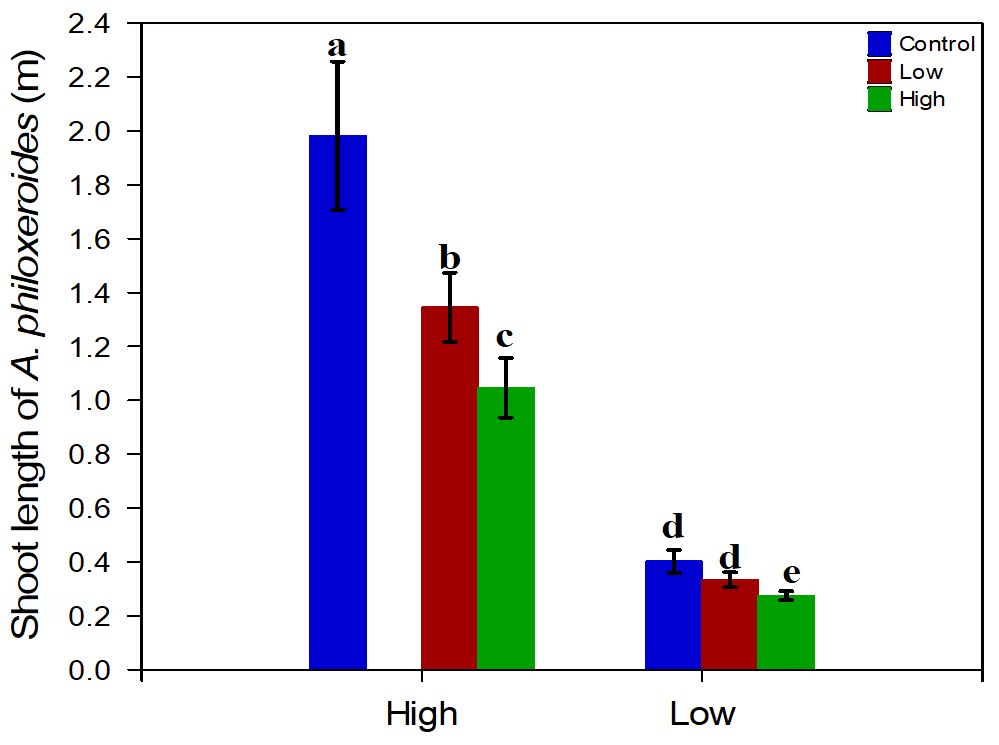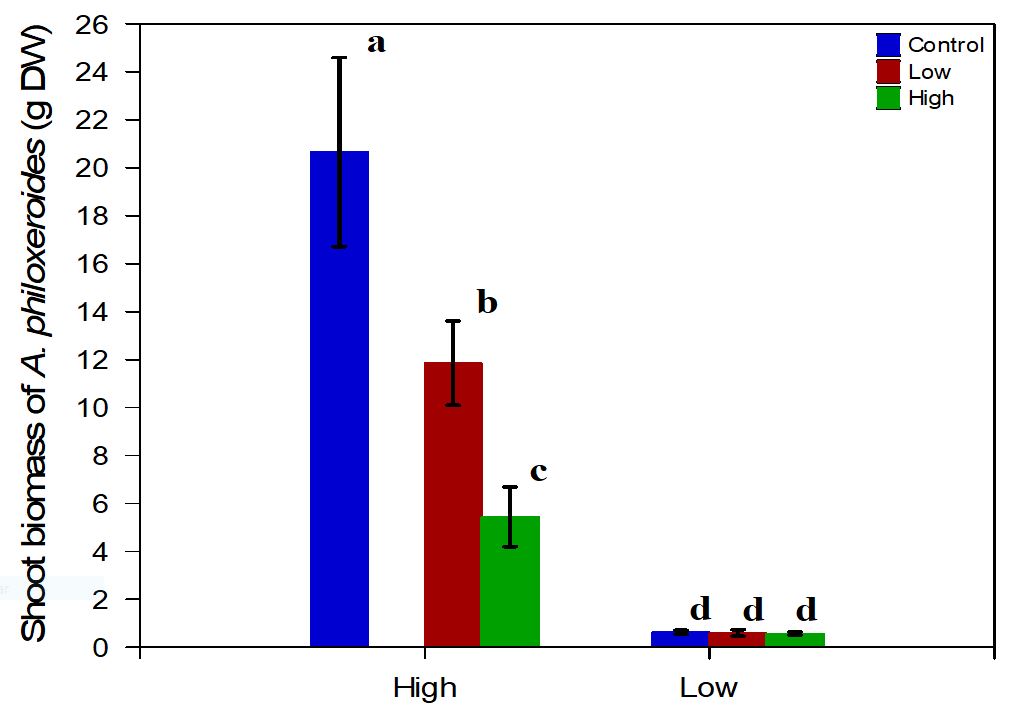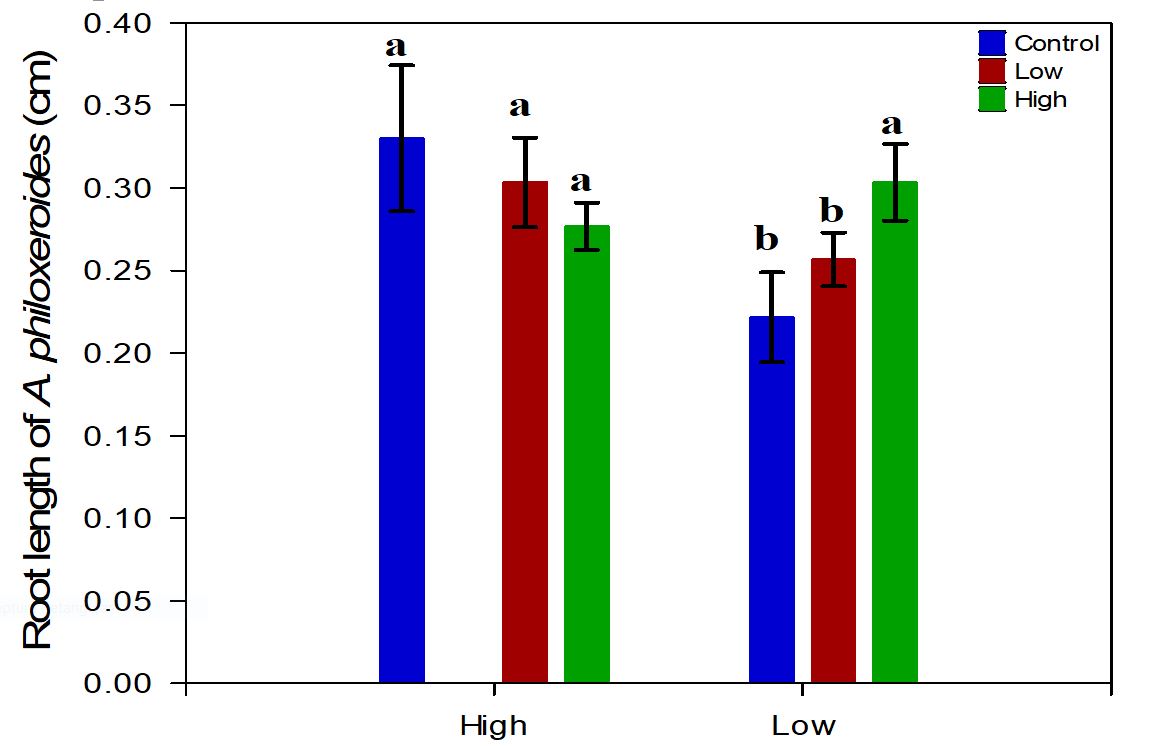Abstract
Aim
The effects of neighbor’s species density and nutrient availability in the sediment are essential to understand the structuring rules of emergent macrophyte communities. The objective of this paper was to investigate how the density of Polygonum ferrugineum and the availability of nutrients in the sediment influence the establishment of Alternanthera philoxeroides.
Methods
After collection, we sectioned the stems of each species so that each propagule obtained was composed of two nodes. These propagules were planted in trays with moist sediment for rooting and development of new leaves for 24 days, and only then were transferred to the experimental mesocosms. Our experimental design had an A. philoxeroides propagule submitted to the following treatments: I – control (planted alone); II – associated with three P. ferrugineum propagules; III – associated with five P. ferrugineum propagules. There were 36 mesocosms arranged inside the greenhouse, with half of them representing conditions of low nutrient availability and half representing conditions of high nutrient availability (with 12.5 g of NPK in the sediment). The experiment lasted 60 days, and the following response variables were measured: aerial length, root length, aerial, root and total dry biomass. The response variables related to biomass were obtained after the plants were dried in an oven at 60°C. We also calculated the relative interaction index (RII) for each treatment, in order to analyze the interactions between the species. Each response variable was analyzed using a two-way ANOVA.
Results
Among the main results obtained, we can highlight the lower accumulation of biomass in A. philoxeroides under conditions of low nutrient availability and high density of P. ferrugineum.
Conclusions
These results indicate the negative effects of P. ferrugineum density on the establishment of A. philoxeroides, contributing to the understanding of the dynamics and structuring rules of the emergent macrophyte community.
Keywords:
interspecific competition; neighbors’ species; emergent macrophytes; experiment in a greenhouse; relative interaction index

 Thumbnail
Thumbnail
 Thumbnail
Thumbnail
 Thumbnail
Thumbnail
 Thumbnail
Thumbnail
 Thumbnail
Thumbnail
 Thumbnail
Thumbnail
 Thumbnail
Thumbnail






